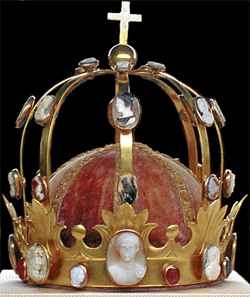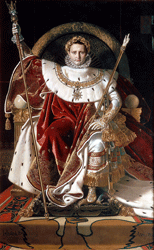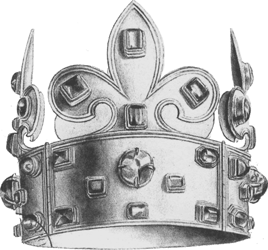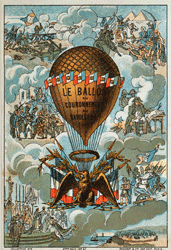|
Two hundred ten years ago on December 2, 1804, Napoleon Bonaparte placed the crown pictured here upon his own head, crowning himself Emperor of France in the cathedral of Notre Dame in Paris. Pope Pius VII, representing the Catholic Church from Italy which Napoleon had conquered, represented the ecclesiastical half of the ceremony and handed the crown to Napoleon. Just prior, a sectarian ceremony was held on the other side of Notre Dame to show Napoleon would not be under the influence of the Pope.
This event in history was the epitome of pomp and ceremony. It lasted three hours inside Notre Dame. But before Napoleon entered, a hot air balloon was launched (unmanned) decorated with 3,000 lantern lights in the shape of a crown. (This was just 21 years after the first hot-air balloon was launched, also in France.) It was aloft for 46 hours before sinking to earth near Rome—a good omen Napoleon thought.1
Upon entering Notre Dame, Napoleon donned a scarlet velvet and ermine fur coronation mantle that weighed 80 lbs. and required four men to carry it. A 400-voice choir, two orchestras and hundreds of musicians performed for the ceremony.
|

The Crown of Napoleon,
now in the Louvre.
|
Napoleon called the crown “the Crown of Charlemagne,” even though it was not the original crown which had been lost in the French Revolution. His intent was to elevate himself to the status of Charlemagne, the King of the Franks, King of Italy and Emperor of the Holy Roman Empire.
After crowning himself, Napoleon replaced it with a golden laurel wreath such as those worn by Roman rulers. Again, he was attempting to symbolically elevate himself, this time to the level of the Caesars. He then touched the head of Josephine with the Crown of Napoleon, naming her empress, but not leaving the crown on her head.
|

|

|

|
|
Napoleon on his Imperial Throne, 1806, in the Musee de l’Armée by Jean Auguste Dominique Ingres (1780-1867), 102 x 63.8 inches.
|
An illustration of the Crown of Charlemagne as it may have appeared in the Year 1271. Napoleon referred to his crown as the “Crown of Charlemagne.”
|
A poster of the balloon launched before the crowning of Napoleon Bonaparte.
|
Napoleon remained emperor until 1814 when he was defeated and exiled to the Island of Elba, near Tuscany, Italy. Escaping, he returned on power and wore the Crown of Napoleon again. However, he reigned for only 15 months before being permanently exiled on Saint Helena, a British island in the South Atlantic. He died there on May 5, 1821 at the age of 51.
No other monarch or ruler of France chose to wear the Crown of Napoleon again, not even Napoleon III.
The Crown of Napoleon resides today in the Louvre Museum in Paris. It is said that all the precious stones have been removed from it and replaced with glass.
Ted Carlton of Utah, Scott and Carolyn Brown of Memories Flea An’Tique Mall in Montgomery, Ala., and Sherron Lawson of Roswell, Ga., correctly identified Napoleon’s Crown.
--------------------------------------------------
1http://www.georgianindex.net/Napoleon/coronation/coronation.html
|